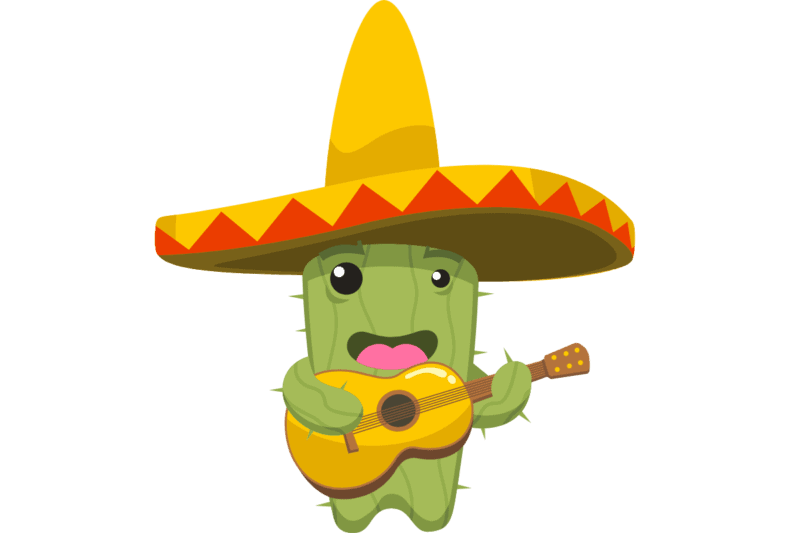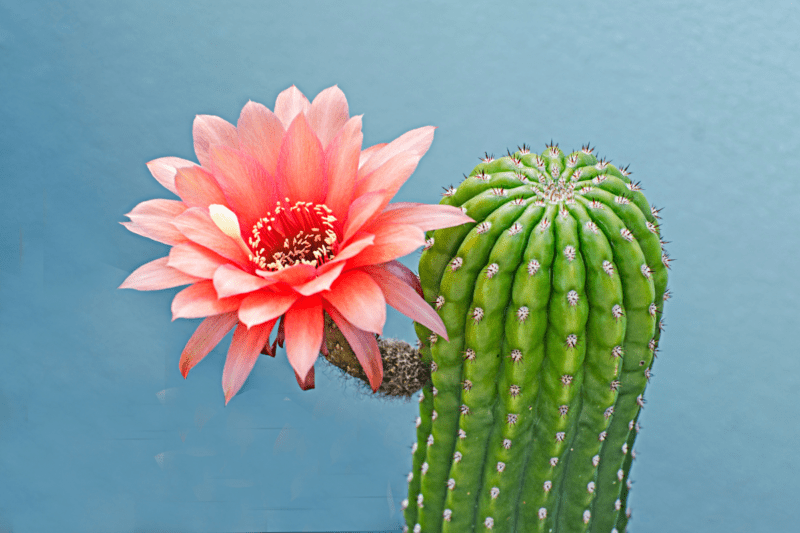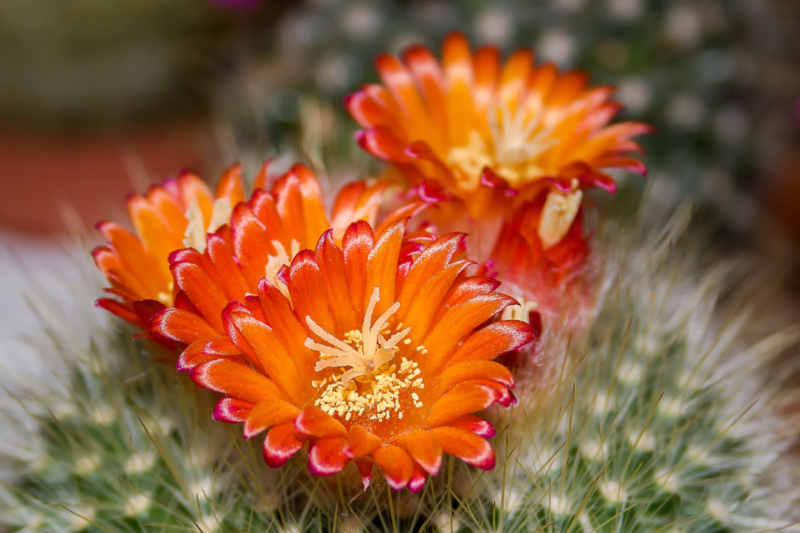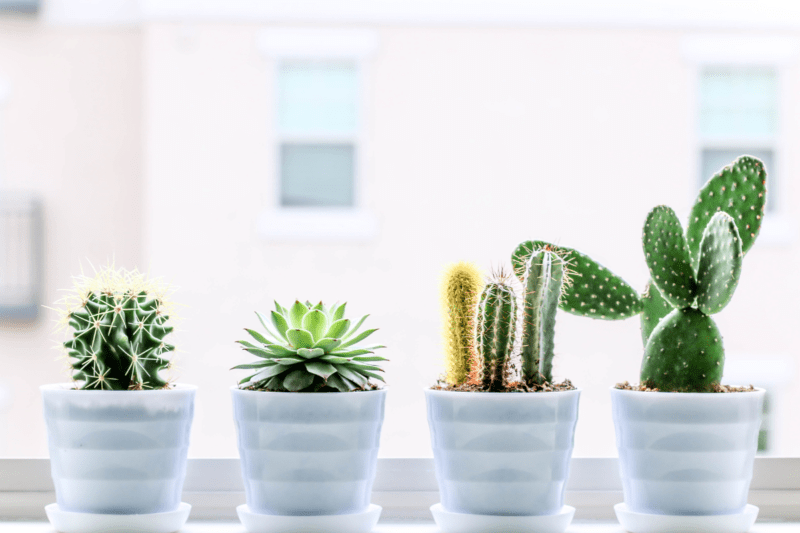If you’ve ever wondered about the possessive form of cactus, don’t worry—you’re not alone! Especially since cactus is one of those weird words that have more than one acceptable plural form, which can make it a pretty thorny issue. So, which option is right? Is it cactuses’ or cacti’s or cactus’s? You’re about to find out.
In this article, we’ll look at each and determine which is correct. So if you want to learn the definitive answer to “What Is The Possessive Form Of Cactus?” grab your favorite beverage and get ready for some good old-fashioned grammatical fun! Yes, grammar can be fun.
Table of Contents
What Is the Correct Possessive Form of Cactus?
The correct possessive form of cactus is “cactus’s.” “Cactuses” and “cacti” are accepted plural forms. Therefore, both “cactuses'” and “cacti’s” are the plural possessive form of “cactus.”

Note, though, that “cactuses” is the more commonly used plural form, while cacti is an older variant of the plural form derived from Latin. However, both forms are correct so both plural possessive forms are acceptable.
What Does “Cactus” Mean?

A cactus is a type of plant with an adaptation to survive in arid and semi-arid regions. Their thick, waxy skin helps them retain moisture and protect against the heat of the desert. They often have spines or needles that act as defense mechanisms against animals who might want to eat them. Cacti are iconic plants found worldwide, from deserts and grasslands to rainforests and mountainous areas.
Their unique appearance can range from small shrubs or bushes to large trees up to 20 meters tall! Most species have succulent stems which store water for long periods during dry spells – some even grow fruits! And while we may think of them as prickly, not all cacti have thorns – some varieties, such as barrel cacti, have smooth and spineless bodies instead.
An interesting fact is that wild turkeys will eat cactus plants, among many other things. To learn more, check out this article on how to form the possessive of turkey and why a bird native to North America has the same name as a country on the other side of the world.
Though their physical characteristics vary greatly depending on where they’re found, one thing remains constant: these resilient plants are masters at surviving in extreme conditions.
Now let’s explore how this term came into existence.
Origins Of The Word “Cactus”

The word “cactus” is derived from the Greek word “kaktos”, which means “spiny plant,” and came to the English language straight from the Latin “cactus.” In other words it went from Greek to Latin to English. And, as you can see, we didn’t make any changes to it.
The origin of the word “cactus” dates to before the 1600s and was first used in reference to a type of spiny plant native to North America. This term has been adopted into other languages, such as Spanish, French, and German. It is believed that this name came about due to its resemblance to a thistle or prickly pear when viewed from afar.
Regarding etymology, it is thought that the Greek root “kaktos” may have been borrowed from Pre-Greek. Essentially, Pre-Greek refers to an unknown language spoken in prehistoric Greece before Proto-Greek speakers arrived in Greece sometime between 2200 and 1900 BCE.
Regardless of where it comes from, the word “cactus” has existed for centuries. And it continues to be used today as an umbrella term for any succulent plants with spines or barbs on their leaves or stems.
It is fascinating how words evolve, but it’s just as fascinating to see that some stay exactly the same.
As we continue our journey through language development, let’s look at what possessive forms of cactus might exist- both singular and plural- so we can gain better clarity on how best to use them when speaking or writing about these amazing plants!
Singular Possessive Form Of Cactus

When it comes to the singular possessive form of cactus, a few rules must be followed. Firstly, when referring to one cactus in particular, you should use “cactus’s.”
This indicates possession for a single object and is always used if only one cactus is referenced. Lastly, “cactus” will never be appropriate as this does not indicate ownership.
The cactus’s spines were a reminder of the harsh desert environment.
The cactus’s bright blooms provided a welcome sight in the otherwise bleak landscape.
The cactus’s shallow root system was designed to capture the limited rainfall in the area.
The cactus’s ability to survive in extreme climates makes it an ideal houseplant.
Is “Cactus’s” Always Indicative Of Singular Possession?

The cactus is a powerful symbol of resilience and strength, an icon that can withstand the harshest landscape conditions. But how is this prickly plant treated when it comes to grammar rules? Is “cactus’s” always indicative of singular possession, or can it mean something else?
This is where the joy of the English language comes in because while “cactus’s” often indicates a possessive, it can also be a contraction for “cactus is.” In this case, the apostrophe replaces the “i” in is, so you end up with “cactus’s.”
To determine whether “cactus’s” is possessive or a contraction for “cactus is,” you must consider the context in which it is used. If the sentence reads, “The cactus’s leaves are spiky,” then it is possessive because it indicates ownership of the leaves.
On the other hand, if the sentence reads “The cactus’s green,” it is a contraction for “cactus is” because it describes the cactus as green. If you can replace “cactus’s” with “cactus is” and the sentence still makes sense, then it’s a contraction.
The cactus’s blooming in the desert.
The cactus’s such a beautiful sight.
The cactus’s a hardy plant.
The cactus’s native to arid climates.
Plural Form Of Cactus: Cactuses or Cacti?

The plural of the word “cactus” is both “cactuses” and “cacti.” “Cactuses” is more widely used now and is formed by simply adding “-es” to the end of the word “cactus.” “Cacti” is an alternate form of the plural that is actually the Latin plural of the word and is just as correct as using “cactuses.”
See what I mean about some words not changing at all? Seriously, we even nabbed the plural from Latin and we still use it today.
| Plural Form | Examples |
|---|---|
| Cactuses | Two cactuses could be seen in the distance. |
| Cacti | The desert landscape was dotted with various species of cacti. |
It is worth noting that while some English speakers opt for “cactuses” as their preferred plural form for this particular word, others prefer using “cacti.” Ultimately though, both are acceptable forms, so you can get as thorny as you like if someone says otherwise.
Plural Possessive Form Of Cactus: Cactuses’ or Cacti’s?

In terms of the plural possessive form of cactus, you will want to use “cactuses’ or “cacti’s,” as both forms are correct and accepted.
The plural possessive of cactuses is formed by adding an apostrophe after the “s” to make it cactuses’. The plural possessive of cacti is formed by adding an apostrophe and an “s” at the end of the word to create “cacti’s.”
It should also be noted that while both forms are technically correct, they can sometimes sound awkward when used in conversation or writing.
For example, saying “the cactuses’ spikes” might sound clunky compared to saying “the cacti’s spikes.”
Therefore, it may be wise to take some time and consider how best to express yourself when using this possessive form of cactus in different contexts.
Examples To Show How To Use The Possessive Form of Cactus Correctly
It is important to understand how to use the possessive form of a word. This can be difficult, especially when it comes to words that already have an irregular plural form, such as cactus. To make things easier, let’s look at some examples of correct usage for singular and plural possession with cacti:
| Singular Possession | Plural Possession |
|---|---|
| The cactus’s leaves are sharp. | The cacti’s leaves are sharp. |
| The cactus’s spines are dangerous. | The cactuses’ spines are dangerous. |
| The cactus’s spines made it challenging to pick up without getting pricked. | The cactuses’ spines made them difficult to touch without getting pricked. |
| The cactus’s flowers were a vibrant pink. | The cacti’s flowers were a vibrant pink. |
| The prickly cactus’s needles were a reminder of the desert heat. | The prickly cacti’s needles were a reminder of the desert heat. |
What Are Some Other Interesting Facts About Cacti And Their Name?

Cacti are fascinating plants that have evolved to thrive in the harshest desert conditions over millions of years. There is a wide variety of cactus types and sizes, ranging from tiny barrel-shaped cacti to majestic saguaros reaching up to 20 feet tall.
Some species even produce colorful blooms! Interestingly, all cacti are succulents, meaning they store water in their thick stems, which helps them survive hot weather.
The term “cactus” was first used by Carl Linnaeus in 1753 when he published Species Plantarum and identified 18 different cactus varieties. Today there are more than 2,000 recognized species belonging to this family of plants.
Due to their unique adaptations for surviving arid climates, some cacti live for centuries with minimal care – one particular species has been known to reach an age of 300 years old!
Furthermore, many ancient cultures, such as the Huichol Indians of Mexico, believed these resilient plants had healing powers and worshipped them as gods. In modern times, we can still appreciate their hardiness while enjoying our own little piece of the desert right at home.
Now You Know the Correct Possessive Form of Cactus!
Now you can rest easy knowing that an irate cactus-obsessed grammarian won’t chase you down for not using the correct possessive form of “cactus.” Remember, the singular possessive is “cactus’s” and the plural can be “cactuses'” or “cacti’s” as both are correct and accepted. So, go forth and write with confidence!
References
Bryant, E. F., & Patton, L. L. (Eds.). (2005). The Indo-Aryan Controversy: Evidence and inference in Indian history. Routledge.
Schultes, R. E., Hofmann, A., & Rätsch, C. (2001). Plants of the gods: Their sacred, healing, and hallucinogenic powers (Rev. and expanded ed). Healing Arts Press.
Species Plantarum | work by Linnaeus | Britannica. https://www.britannica.com/topic/Species-Plantarum

